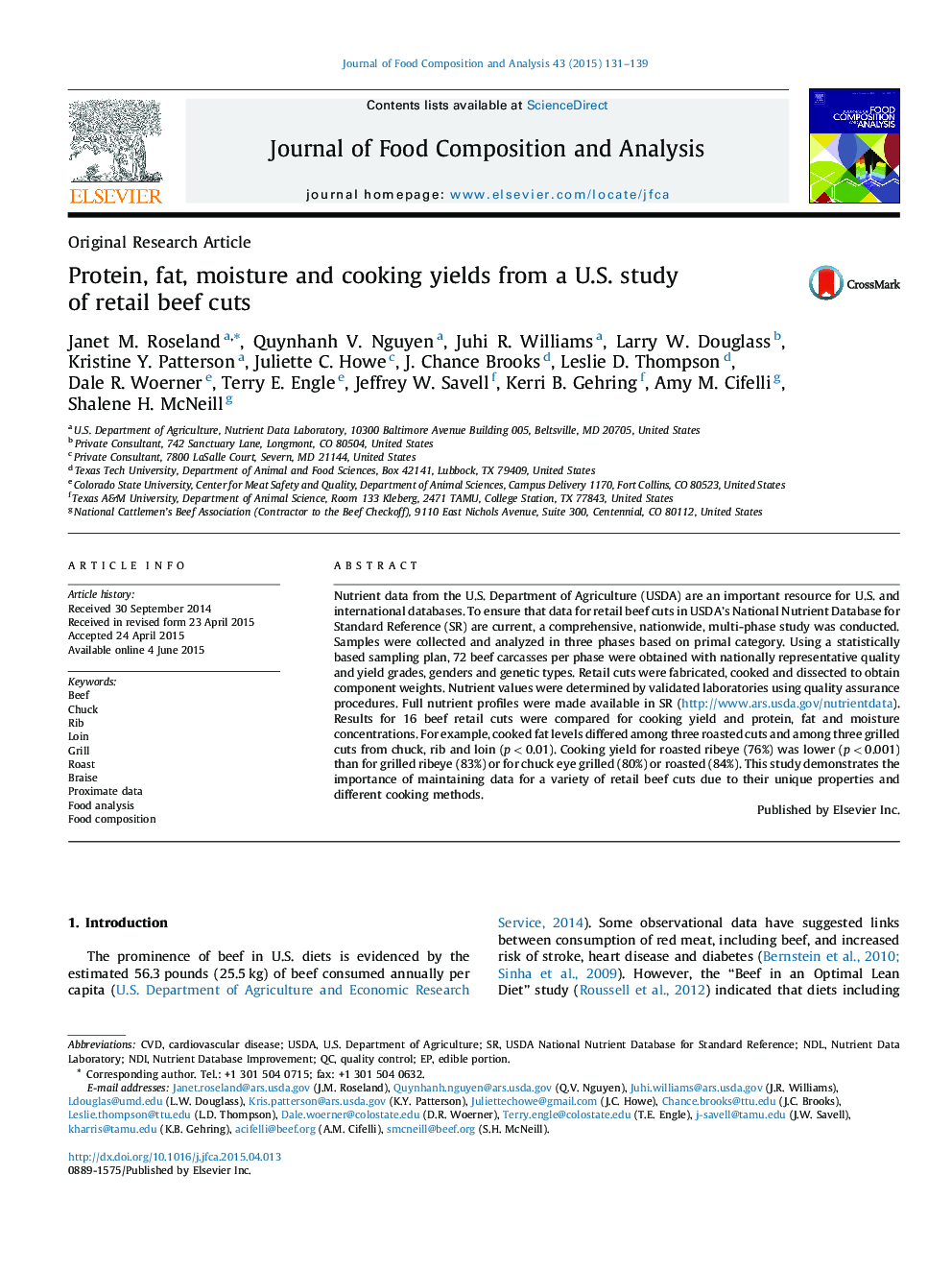| Article ID | Journal | Published Year | Pages | File Type |
|---|---|---|---|---|
| 1218081 | Journal of Food Composition and Analysis | 2015 | 9 Pages |
•We show the impact of a comprehensive U.S. study conducted to obtain beef data.•Protein, fat and moisture for pairs and groups of similar beef cuts are compared.•Patterns were seen in fat, moisture, and protein content due to cut characteristics.•Cooking yields were lower for braised cuts than for grilled or roasted cuts.•Differences among cuts demonstrate factors that affect nutrient content and yield.
Nutrient data from the U.S. Department of Agriculture (USDA) are an important resource for U.S. and international databases. To ensure that data for retail beef cuts in USDA's National Nutrient Database for Standard Reference (SR) are current, a comprehensive, nationwide, multi-phase study was conducted. Samples were collected and analyzed in three phases based on primal category. Using a statistically based sampling plan, 72 beef carcasses per phase were obtained with nationally representative quality and yield grades, genders and genetic types. Retail cuts were fabricated, cooked and dissected to obtain component weights. Nutrient values were determined by validated laboratories using quality assurance procedures. Full nutrient profiles were made available in SR (http://www.ars.usda.gov/nutrientdata). Results for 16 beef retail cuts were compared for cooking yield and protein, fat and moisture concentrations. For example, cooked fat levels differed among three roasted cuts and among three grilled cuts from chuck, rib and loin (p < 0.01). Cooking yield for roasted ribeye (76%) was lower (p < 0.001) than for grilled ribeye (83%) or for chuck eye grilled (80%) or roasted (84%). This study demonstrates the importance of maintaining data for a variety of retail beef cuts due to their unique properties and different cooking methods.
